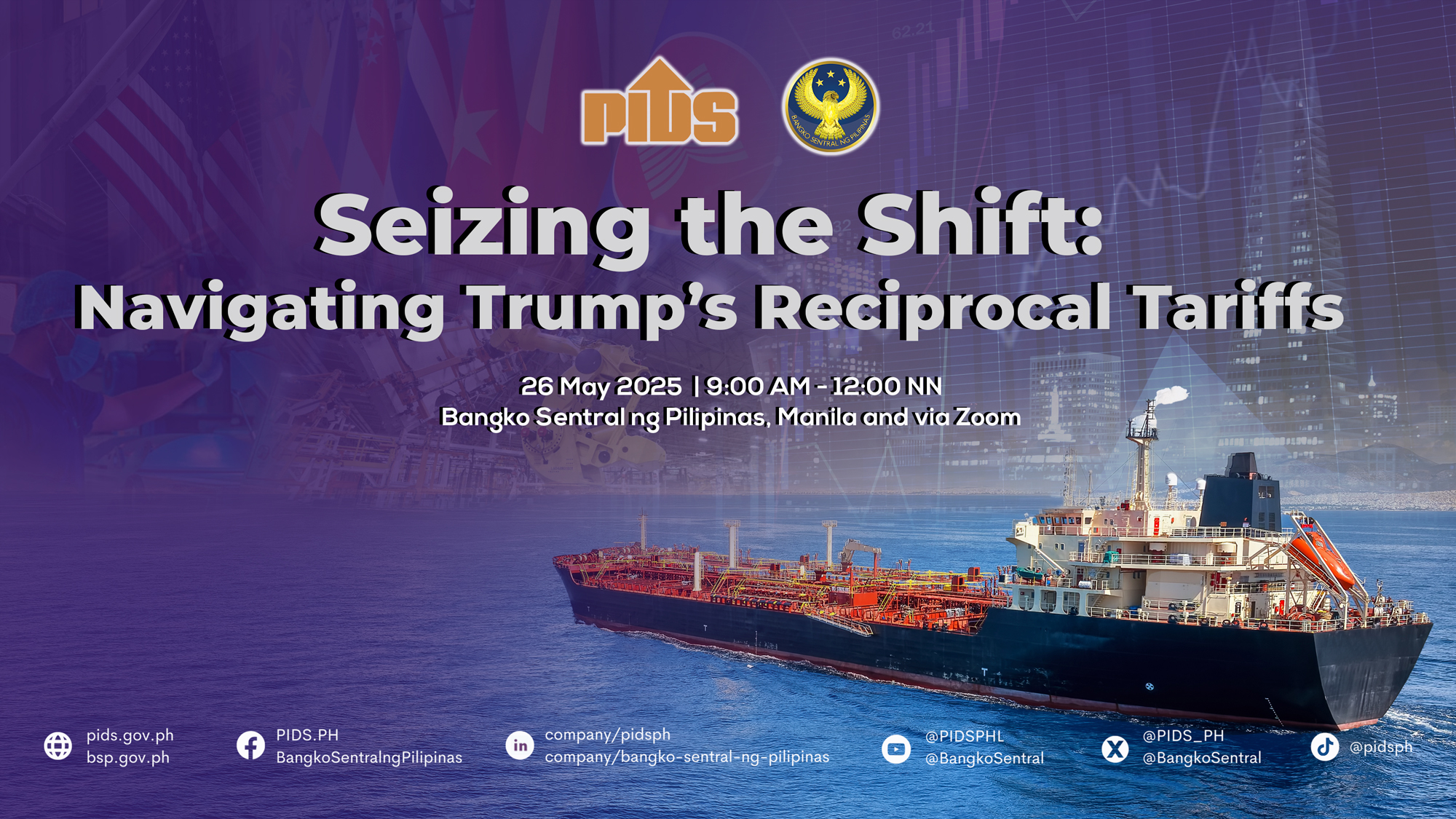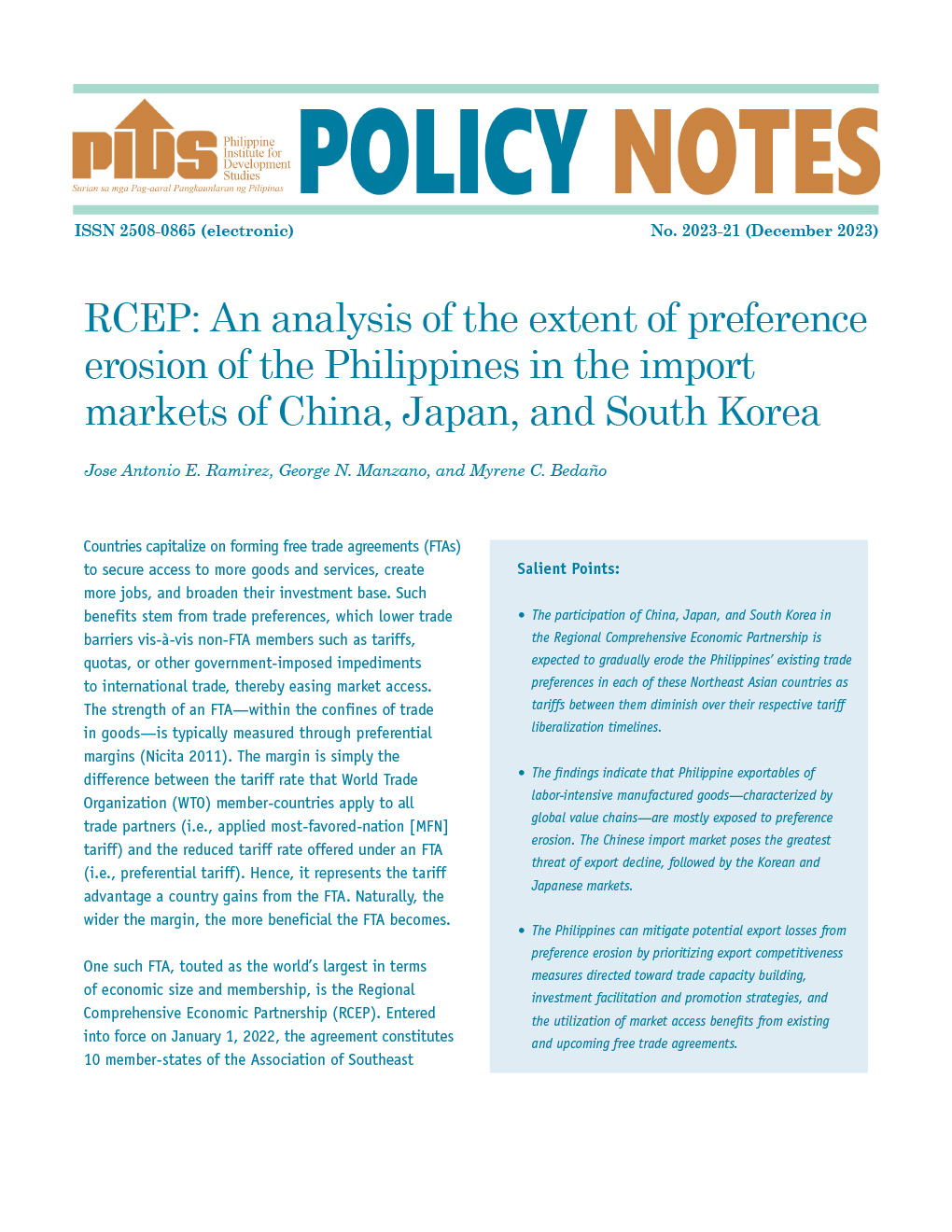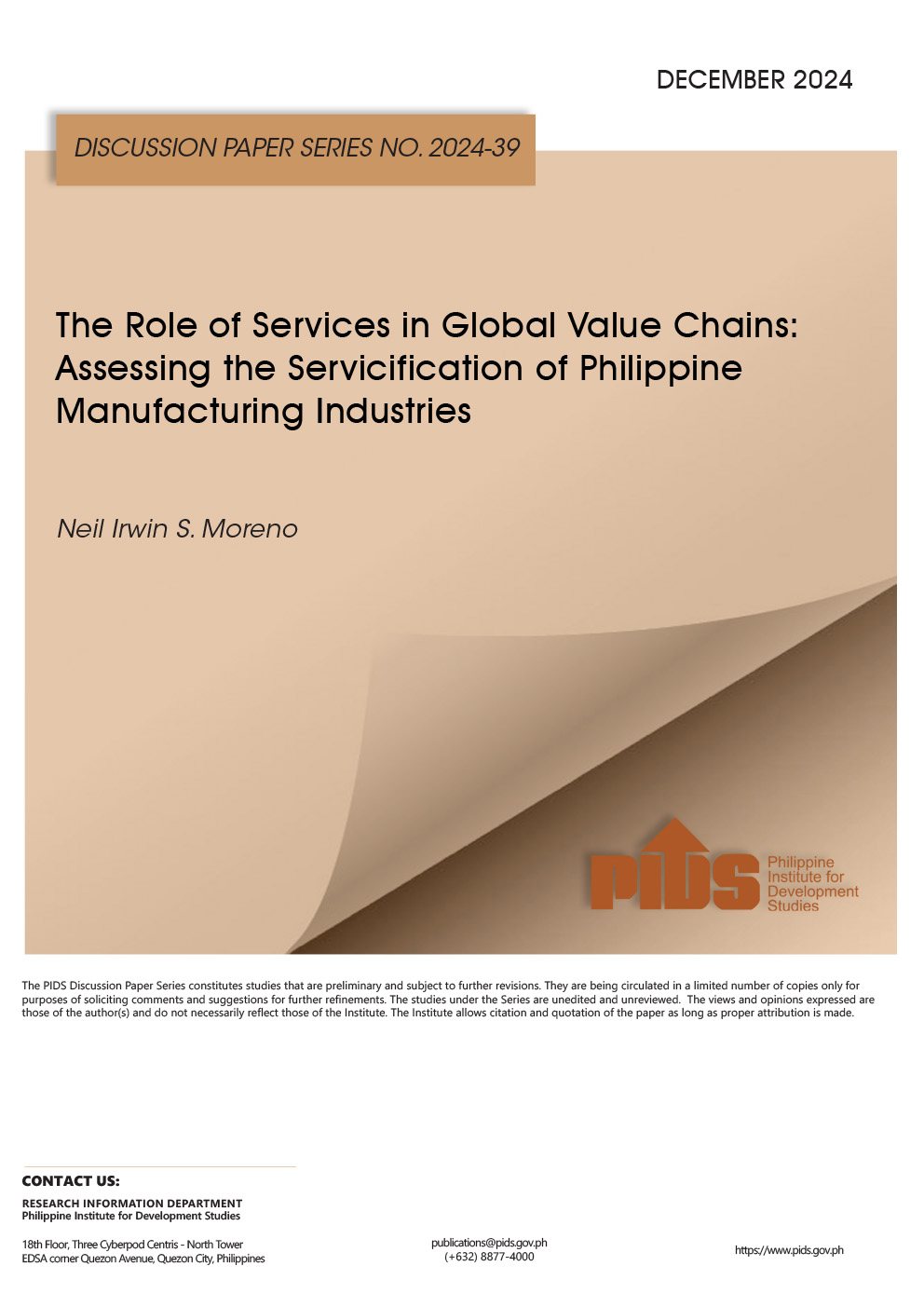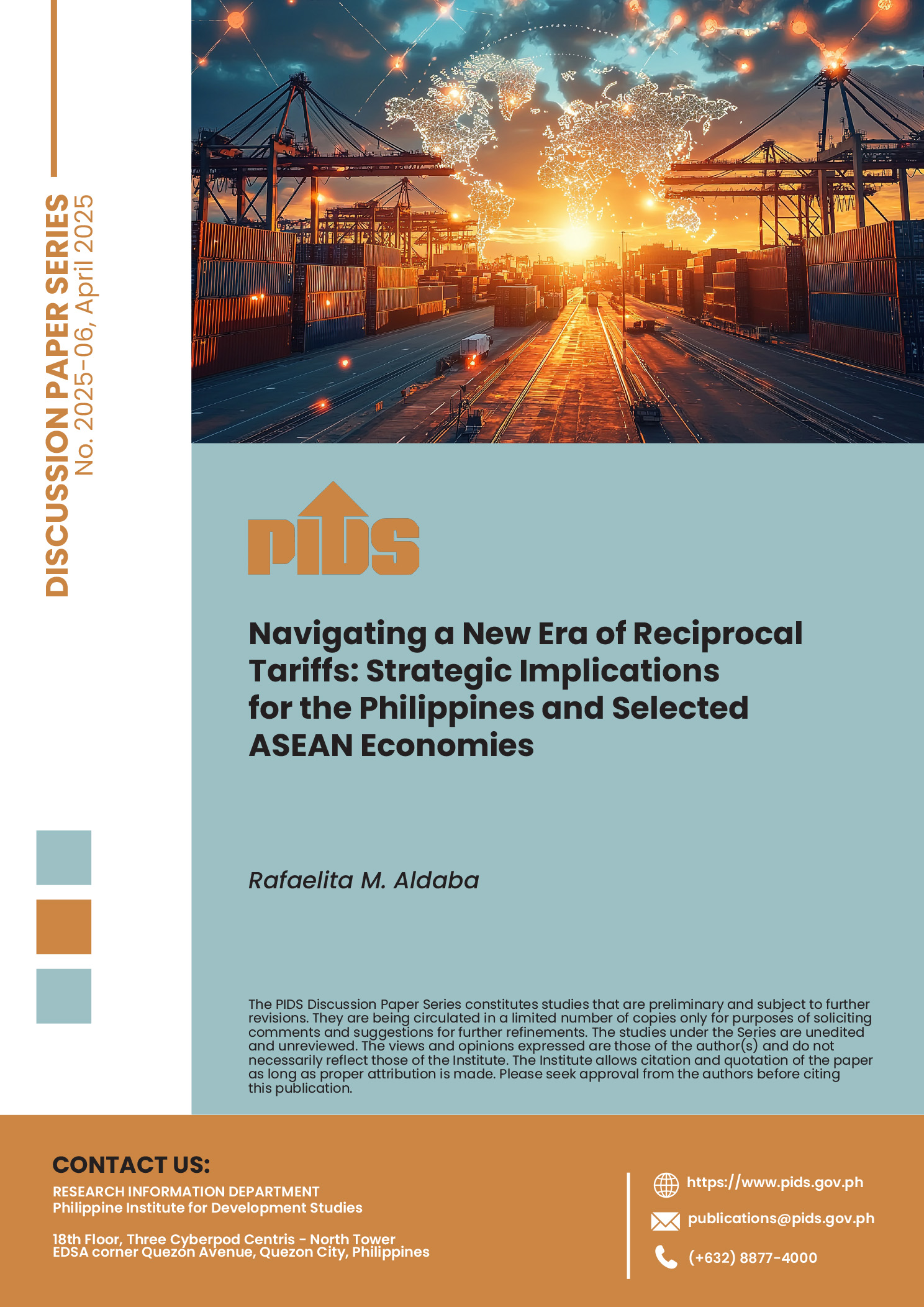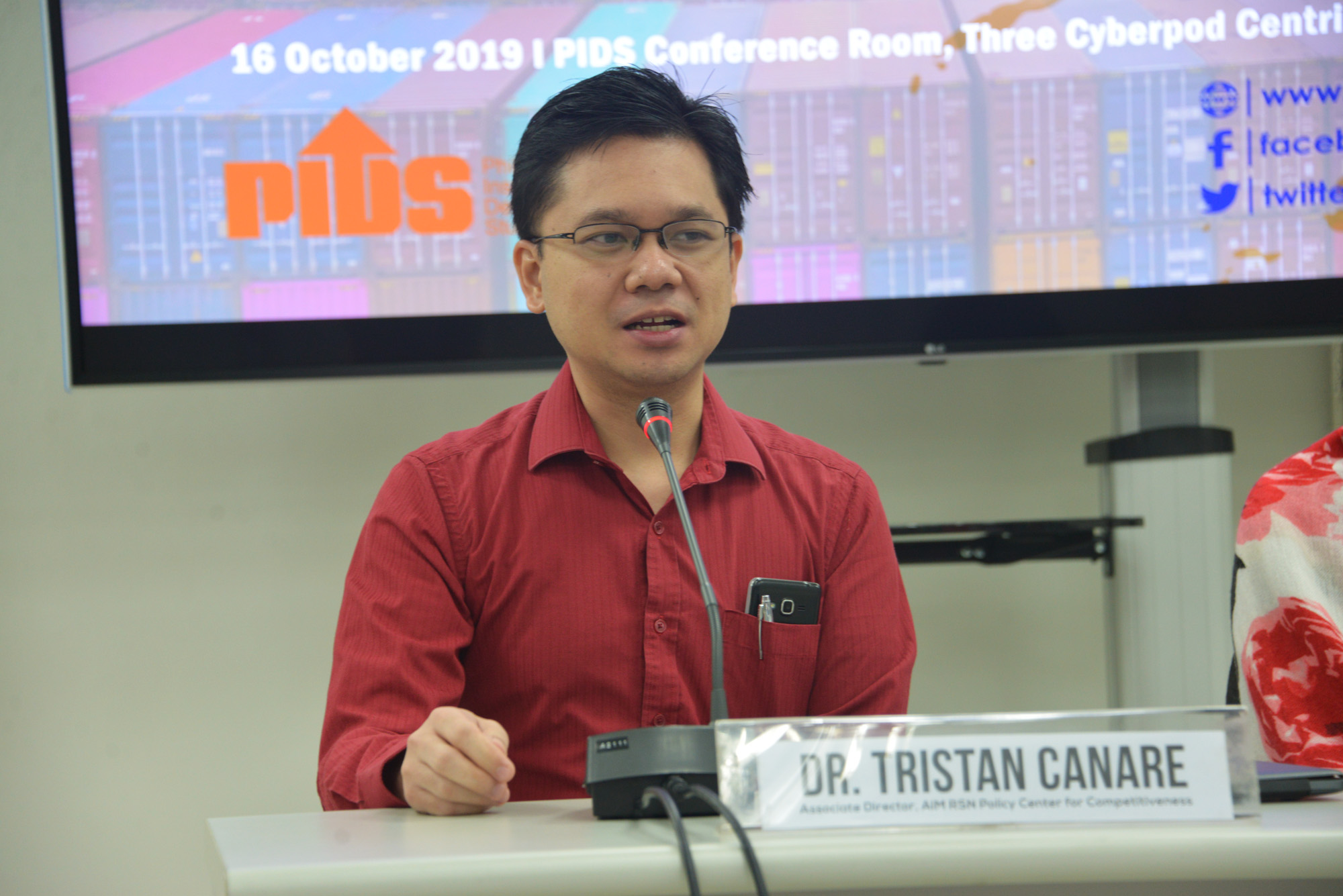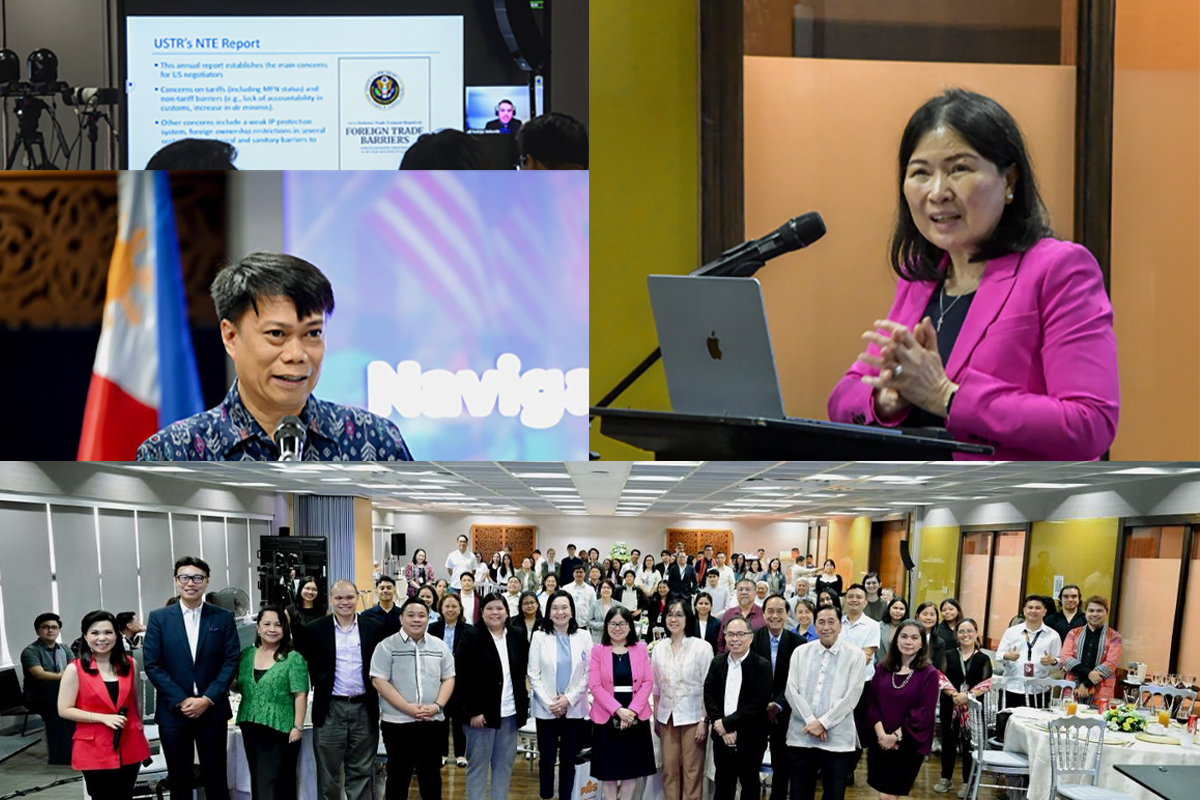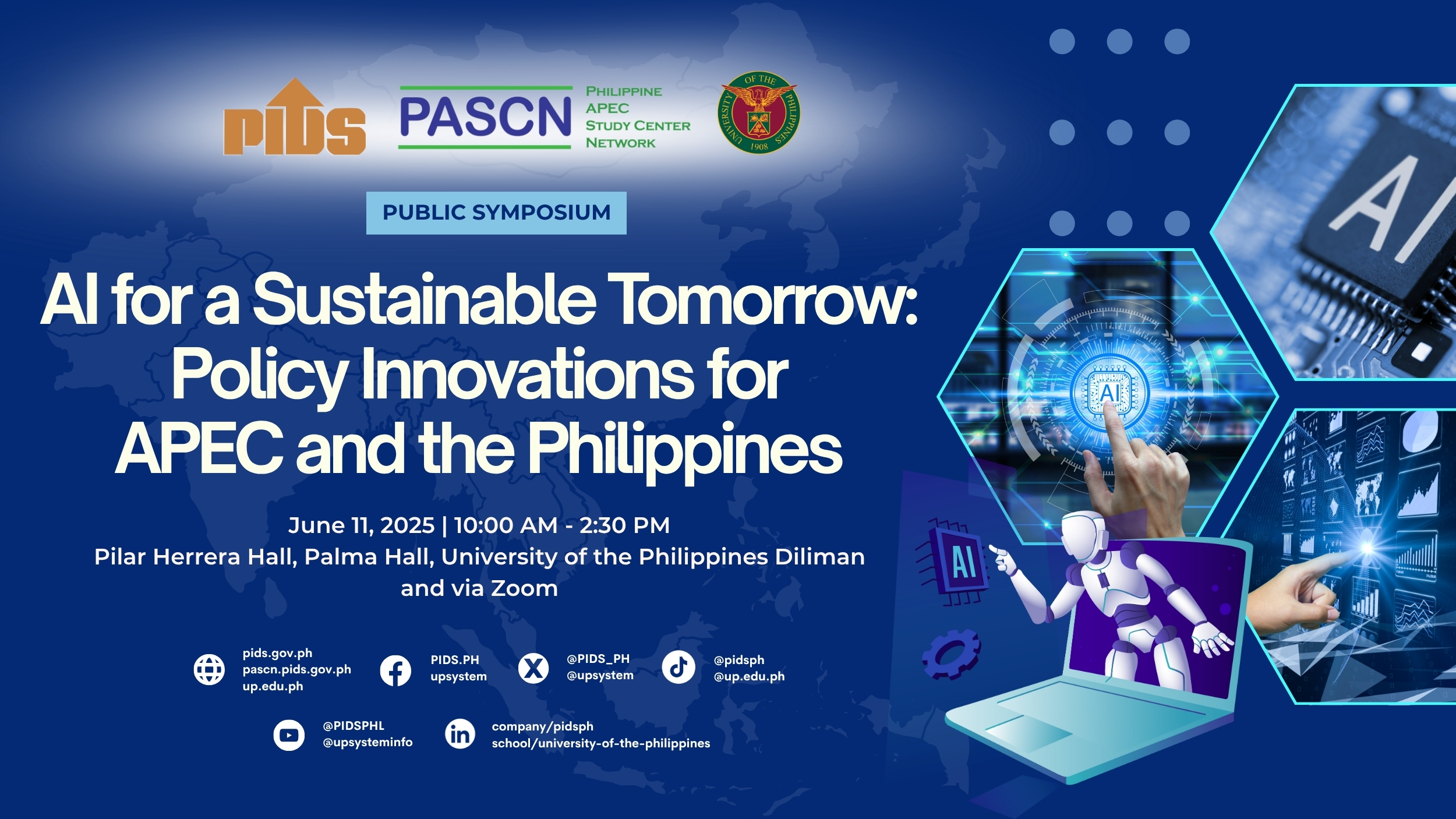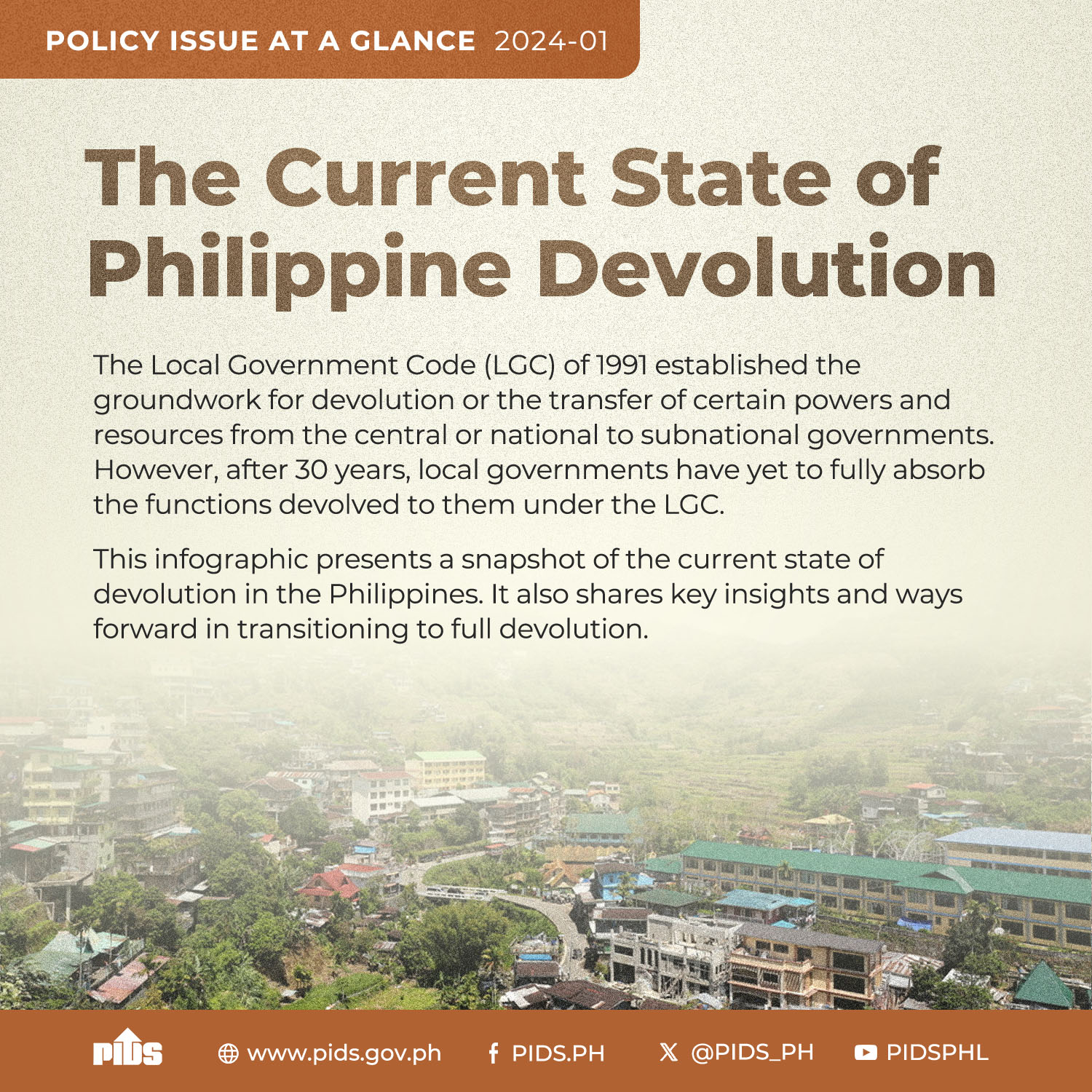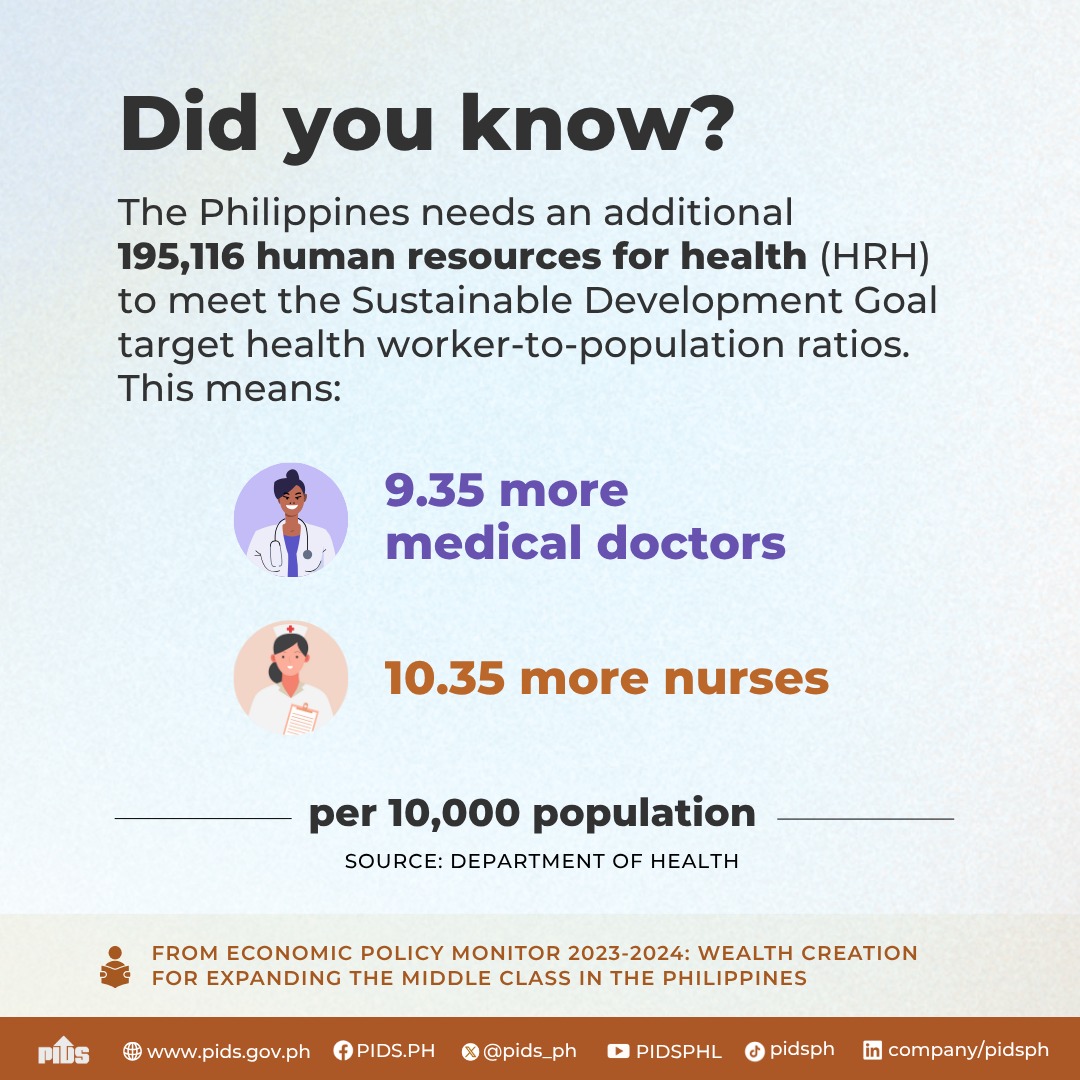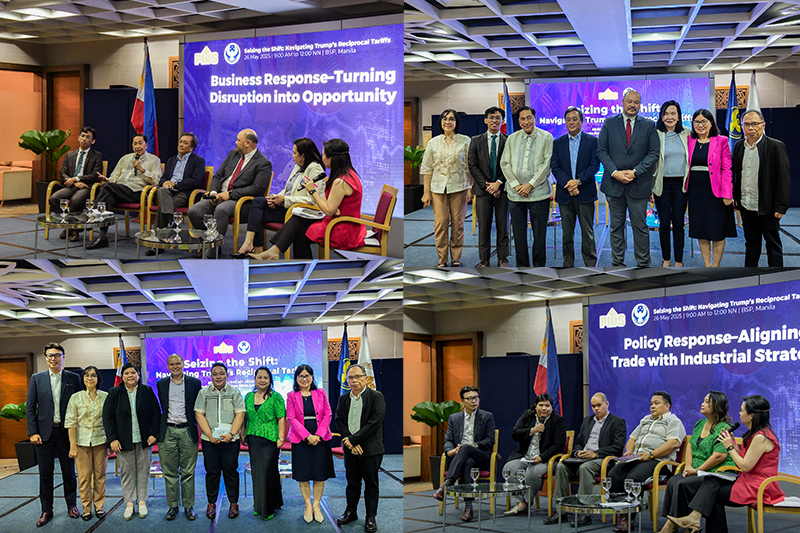
In a high-stakes forum organized by the Philippine Institute for Development Studies and the Bangko Sentral ng Pilipinas, industry leaders and policy experts gathered to discuss how local industries are coping, what policy levers are available, and what strategic moves are necessary to mitigate risk and seize opportunity in the Trump-era of reciprocal tariffs.
With the United States (U.S.) imposing additional tariffs based on trade deficits, Philippine exporters, manufacturers, tax experts, and government officials mapped out their responses amid geopolitical uncertainty.
Wearables industry under pressure
Setting the tone in the first panel discussion, Confederation of Wearable Exporters of the Philippines Executive Director Maritess Jocson-Agoncillo emphasized the scale of U.S. imports of garments, shoes, and bags—worth about USD 400 billion a year. She also warned of the severe impact of new tariffs on the Philippines’ USD 1.8 billion share of that market.
“Trump’s store is basically what everyone is wearing. Your jeans [are] already at 14.9% tariff going into America… ours is 32% plus 10% or plus 17%. This is a very critical moment for the industry,” she said.
Agoncillo also elaborated on how existing tariffs already burden Filipino wearable exports, with more than 5,800 tariff lines across 15 chapters, ranging from apparel to leather goods and footwear.
While she shed potential for strategic advantage: “If Cambodia and Vietnam would get a little higher than 17%, then [the wearable industry in the Philippines] can still exist,” she underscored Philippines’ limitations on the automation in garment production.
“We are one of the unique industries that still rely on human hands,” Agoncillo stressed, underscoring that technology alone cannot fill the gap.
Electronics, semiconductors may benefit
Despite the turbulence, Earl Lawrence Qua, Vice President of Ionics-EMS Inc., expressed cautious optimism: “Globally, the semiconductor and electronics export is about 45 billion U.S. dollars… we have electronics manufacturing, design, and other services we cater to the U.S..”
Reinforcing this, Cristjan Dave Bael, Associate Business Lead for External Affairs of the Semiconductor and Electronics Industries in the Philippines Inc., highlighted that: “As per values of March 2025… we had an uptick of 2%. So, it became 3.96 U.S. billion dollars of our total export, and 15.4% of this 3.96 goes to the U.S..”
Both industry leaders noted that the post-April 2 environment triggered interest from global firms.
“We did see an uptick of interest… coming from Taiwan and even China who currently have their manufacturing base in Vietnam,” Qua said.
Yet this interest is tempered by caution. As many companies are waiting for the 90-day extension to expire before fully committing, Qua and Bael underscored the need to get as much information and create as many scenarios.
“It takes about six to eight months to plan, 18 months to implement… and another two years of ramping up,” he added.
Qua also emphasized enhancing local capabilities to meet the demands, particularly in design.
“What we see now is that we receive a product or device—‘Can you please reverse engineer that?’—because we do not have the design of our own product,” he said.
The electronics sector, he said, is treating this tariff era as a “game of musical chairs.”
Steel and domestic market concerns
For SteelAsia’s Roberto Batungbacal, Vice President for Industry Development, the issue is less about exports and more about protecting the domestic market from trade diversion.
“We are not the best practitioners” of trade defense, he warned, urging faster implementation of countervailing, anti-dumping, and safeguard measures.
“It probably takes us a year [to investigate], Vietnam does that in 120 days,” he pointed out.
Nevertheless, he sees an opportunity to implement industrial policy and grow export and domestic industries. SteelAsia is already building three new electric arc furnace plants using scrap metal.
“We are able to produce green steel, which is 90% lower [in] carbon emissions than blast furnace from China,” he said.
Export confederation calls for urgent support
Dr. Sergio Ortiz-Luis Jr. of the Philippine Exporters Confederation, lamented the government’s historic neglect of exports, citing lack of funds for research and development and trade promotion.
“We are the most unsupported export industry in the whole of Asia. We are asking for some funding for export… [but the Department of Trade and Industry (DTI)’s] budget is among the smallest,” he declared.
Ortiz-Luis emphasized the need to treat tariffs as a wake-up call for more budget allocation and trade facilitation reforms.
Policy tools and tax engineering
SGV & Co. tax experts proposed legal tools such as the first sale concept and duty drawback schemes to ease tariff burden.
“We are not constrained just to accept whatever that tariff rate is,” said Atty. Lucil Vicerra. Yet, she cautioned that “there may not be one-size-fits-all” and these strategies depend heavily on documentation and industry-specific contexts.
Atty. Victor De Dios added that while laws such as CREATE and CREATE MORE provide strong legal frameworks, he stressed for better implementation both at the national and local levels, as “investors are bothered by uncertainties.”
Remittance and service sector resilience
The potential imposition of a remittance tax by the U.S. also drew concern.
“Remittances from the Middle East and Europe… might balance the threat,” said Assistant Secretary Neil Adrian Cabiles of the Department of Finance. He admitted, however, that implementation would be complex and may be circumvented based on the U.S. system.
On the Business Process Outsourcing front, Cabiles acknowledged possible impacts but assured that consultations with industry stakeholders are ongoing.
“We are working with ITMAP on how the sector might prepare,” he said.
CHED: Time to align education with industry
Representing the Commission on Higher Education, Division Chief for Knowledge Management Cyrus Paolo Buenafe highlighted the long-term nature of educational interventions.
“If you are looking at higher education… you will have to wait four years before you get some reward,” he said, arguing for deeper integration between education policy and industrial strategy to build a future-ready workforce.
Geopolitical leverage and strategic posturing
Despite the Philippines’ relatively small trade volume with the U.S., DTI Director for Export Marketing Bureau Bianca Pearl Sykimte stressed that the Philippines remains a “growing market for passenger vehicles and agriculture.”
She emphasized that the country does not contribute to the U.S. trade deficit in key areas and reported “we were able to convince [the U.S.] to talk to us,” citing a May 2 meeting with a U.S. trade representative.
The session extended beyond the allotted time, which she described as “a very good and productive meeting.”
She advocated for a mutually beneficial agreement: “It is worth sitting down with the Philippines and negotiating.”
Final reflections – competitiveness and domestic reform
As the forum closed, participants reflected on long-standing competitiveness issues that must be addressed regardless of tariffs.
“We have to look at power cost, productivity, infrastructure… and ease of doing business,” one attendee summarized during the open forum.
While the Trump-era tariffs present immediate risks, they also offer a once-in-a-generation opportunity to recalibrate the Philippine trade and industrial strategy.
“Let us not think of offering anything [to the U.S.] because there is nothing we can offer… we are collateral,” said Ortiz-Luis.
However, if reforms are accelerated and opportunities seized, the Philippines might not just survive the tariffs—it might thrive.
Watch the forum playback at https://bit.ly/pidslive052625. — MJCG

